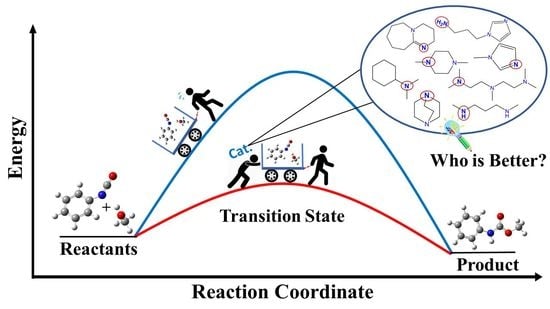Computational Study of Catalytic Urethane Formation
Abstract
Share and Cite
Waleed, H.Q.; Csécsi, M.; Hadjadj, R.; Thangaraj, R.; Pecsmány, D.; Owen, M.; Szőri, M.; Fejes, Z.; Viskolcz, B.; Fiser, B. Computational Study of Catalytic Urethane Formation. Polymers 2022, 14, 8. https://doi.org/10.3390/polym14010008
Waleed HQ, Csécsi M, Hadjadj R, Thangaraj R, Pecsmány D, Owen M, Szőri M, Fejes Z, Viskolcz B, Fiser B. Computational Study of Catalytic Urethane Formation. Polymers. 2022; 14(1):8. https://doi.org/10.3390/polym14010008
Chicago/Turabian StyleWaleed, Hadeer Q., Marcell Csécsi, Rachid Hadjadj, Ravikumar Thangaraj, Dániel Pecsmány, Michael Owen, Milán Szőri, Zsolt Fejes, Béla Viskolcz, and Béla Fiser. 2022. "Computational Study of Catalytic Urethane Formation" Polymers 14, no. 1: 8. https://doi.org/10.3390/polym14010008
APA StyleWaleed, H. Q., Csécsi, M., Hadjadj, R., Thangaraj, R., Pecsmány, D., Owen, M., Szőri, M., Fejes, Z., Viskolcz, B., & Fiser, B. (2022). Computational Study of Catalytic Urethane Formation. Polymers, 14(1), 8. https://doi.org/10.3390/polym14010008







